In early October this year, the Contrasens Association presented a new project with social stakes, titled On Her Side, curated by Dana Sarmeș and Simona Constantin, which took place at Centrul de Proiecte Timișoara. It was an interdisciplinary initiative that explored problematic issues such as violence, aggression, and abuse against women, consisting of several parts: research and artistic production, exhibition event, teaching through an extensive mediation program, and documentation.
On Her Side has shaped a discourse on the intersectionality of violence, which is revealed in the exposure of women’s distinct experiences and needs, while also alluding to a subjective context in which race, ethnicity, social class, culture, and nationality play a crucial role in the dynamics of how authorities provide support services to struggling. Violence is examined as a tool for the exercise of power, coercion, and repression in the present social and political context influenced by the lust for power, territorial expansion, and monopoly. Thus, violence cannot be modeled by rules, laws, social conduct, or humanistic ideals. It creeps deceitfully and viciously into a world marked by trauma and dehumanization.
The bodily reflection of violence was the basis for the research and development of On Her Side, sparking a conversation in art about violence and the position of women in society and history. In this way, it emerged as an interdisciplinary art project with a social purpose firmly aimed against aggression, violence, and abuse of girls and women, in and out of the art.
The artists involved in the exhibition project are Liliana Basarab, Irina Botea Bucan, Ciprian Chirileanu, Ana Mihaela Adam, Claudiu Cobilanschi, Suzana Dan, Jon Dean, Simona Homorodean, Pusha Petrov, Lea Rasovszky, Renée Renard, Ioana Stanca, Iulia Toma. The Contrasens Association’s project also included an activism design section, where more than 30 posters on the subject of violence against women were exhibited in the public space.
Ana Adam exhibited the Văd cu sfârcurile/I See with my Nipples artwork, where she explores the relationship between contemplative femininity that cyclically rebuilds itself and art as a tool in an existential journey. The installation centers around reclaiming power and breaking free from the victimization process in which we are tempted to stay stuck following the traumatic events marking our existence. This symbolic gesture becomes a performative act that marks the inner cleansing and, simultaneously, the “washing away” of the trauma from personal existence, the perception process of art becoming cathartic. The use of soap as a central element in the rhythmic arrangement of the art installation highlights the unseen work that women carry out in their domestic perimeter, acting as a metaphorical representation of women’s status in their personal and family life. Anna Adam’s piece takes the form of an artistic act about the feminine, namely about what the artist calls “feminitude” – feminine attitude. Thus, Văd cu sfârcurile/I See with my Nipples becomes a confessional artwork about feminitude, power, appearances, fragility, and the metamorphosis of matter.
Suzana Dan’s site-specific artwork, Ești frumoasă/You’re Beautiful invited viewers/participants to write a personal message related to the concepts of femininity, trauma, violence, or abuse on the wall where the artist, in turn, contributed with text. Suzana Dan’s approach emerged as a sarcastic endeavor to condemn the abusive phrases and clichés directed at women by their partners, friends, family, co-workers, bosses, and, finally, by the entire circle of people that could revolve around a woman. “You’re beautiful. But you are sad, absent, burdened with worries, indifferent, disobedient, messy, nagging, impassive, indifferent to the opinions of others, weird, stubborn […]”
Vocea colectivă, The Peaches, Power of The Ladies, the collaborative work of artists Irina Botea Bucan and Jon Dean, was shaped as an interdisciplinary installation consisting of textile pieces, embroidery, sound, and film, deconstructing the concept of “confession” as a necessary method in the process of educating the audience. The main aim of the piece was a profoundly social one, that of raising awareness about the problem of domestic violence in Romania. The artistic act took shape initially as participatory workshops organized over four days, where friendships developed around a wide range of creative responses, finally leading to three separate groups that helped create the artworks on display: Vocea Colectivă, Puterea Doamnelor, Piersicuțele/The Collective Voice, Power of The Ladies, The Peaches. Their actions, translated into an experimental gathering of performative movement, sound and vocalization production, individual and collective writing, conversations and social interactions, contributed to the production of embroideries, audio works, and 16mm film. The collaborative film Out of the Hat documents a performative intervention of solidarity acts, recording an experimental chorus of voices that evoke a joy that transcends the profoundly painful memories of the past. The ephemeral space that Irina Botea Bucan and Jon Dean were able to shape through the spatial staging of the installation pieces was one of reflection and contemplation, a warm and intimate setting of authentic interaction. A space of joy that actually speaks both about celebrating life and suffering.
Claudiu Cobilanschi turns the elevator at Centrul de Proiecte into a transitional space of interaction that actually forms the mixed media installation Post-Party. By integrating decorative party elements associated with a single dramatic counterpoint – a minimalist black and white photograph suggesting intimacy, closeness, and solidarity – the artist crafts a context that is aesthetically in contrast with the expression of trauma but which marks a perimeter of reflection around questions such as: “what is the opposite of violence? how does it work? who does it use? on which side of the gender does it lie? from where does it stem? how does it get into a person’s character? how can it be eradicated? what are its warning symptoms? who is violent? how can it be controlled? when is there too much of it? how is it canceled? what is its remedy? how long does it last? what are the consequences of violence against women? for whom are the consequences? how can you speak on behalf of the victim? but that of the aggressor? how can you picture what a victim of violence is thinking? how do you become the aggressor? how do you stop?”
Iulia Toma produces a textile installation entitled Butoniere 325/Cufflings 325, made of men’s shirts. The monumental nature of the spatial pathways and the formal tension that lies in the way the shirts are knotted convey a subtle kind of drama, like an immutable decision of an oppressive silence that hides narratives never to be revealed: “The iron covers miles of masculinity, his shirts are my mornings, I prepare a tight suit of armor every day. I tie the sleeves to each other like an escape tool, let them hang around, a swing set up for an idea, the clean columns stretch to the beam, I turn against you and I vanish.”
Ciprian Chirileanu has put together a series of works entitled 12 Poeme/12 Poems, following his own research in the online press about women killed by domestic violence in Romania. His pieces depict faces adapted and elaborated based on the portrait photos found in the journalistic sources he examined, respecting the privacy of the victims. His compositions display faces interpreted and processed based on the portrait photos found in the journalistic sources he consulted, respecting the privacy of the victims. The poems accompanying the artworks are designed to be a personal insertion for filtering and interpreting the journalistic material, intended to expressively and conceptually enhance the images. intended to expressively and conceptually enhance the images. In the vast majority of the reported cases, domestic violence is dominated by the final action of a knife, the only object that becomes the main subject of the video footage. In the case of Ciprian Chirileanu’s works, the poems metaphorically become the “knife” that completes the act of perception, giving the viewer literally the feeling of having their stomach in knots. The texts simply take your breath away, poetically embedding a brutal, repulsive reality. Word and image work together flawlessly, causing a click of awareness with every stop the observer takes in front of the work.
Pusha Petrov designed a cyanotype installation on silk, mounted on the mechanical structure, intending to capture fragments of the women’s workspace in the old silk spinning mills – titled Eu țes, eu controlez, eu răspund! /I Weave, I Check, I Am Responsible!. The artist worked with the 1983 negatives of the photographer Constantin Duma, which she adapted into an interactive art installation. Pusha Petrov thus explores the antithetical relationship between the industrial, rigid space of the work environment and the delicate, precious finished product: silk. As spatial and temporal context and as a documentary feature necessary for understanding the work, it is important to mention that sericulture took on a particular significance in Romania in the 1970s due to a special development program that made Lugoj an influential center for the textile industry.
Lea Rasovszky makes a work of a confessional nature, Femeia care protejează̆ cactusul / Woman Protecting the Cactus, like a visual metaphor for the act of mental shielding in the face of trauma. The cactus, made of latex and fabric, possesses organic materiality, appearing as an internal organ throbbing with pain and rejection. It becomes an integral part of the female character’s body in relation to her, like an extension that she wants to embrace and forget at the same time. Trauma becomes an integral part of a person’s becoming, marking their existential journey and lying in a latent corner of consciousness that cannot be denied – only accepted and assumed.
Renée Renard exhibited an installation consisting of ceramic and porcelain plate fragments put together with the kintsugi technique, based on Pina Bausch’s statement: “Your fragility is also your strength”, as well as a workshop extract and a video. Kintsugi refers to an ancient Japanese technique that was used to reassemble the 22 broken plates and highlights that trauma and scars should not be concealed but marked with gold, celebrating the beauty of imperfection and fragility as signs of recovery and healing. The workshop showcased in the gallery not only depicts the stages of plate repair work but also the prevalence of scenarios of domestic violence against women and the ongoing need for support in trauma recovery. Renée Renard explores both the processuality and the aesthetic qualities as well as the conceptual strength of its outcome in a powerful work crafted through sensitivity.
Ioana Stanca showed the installation Comet, and the embroidery on canvas Painted Tongue Vertigo. Comet was set up as a soft sculpture made of embroidery on velvet and silicone filling on a metal structure representing oversized scissors as an alter-ego-type projection. This included embroidered eyes across the entire surface of the piece, matching in placement and number the constellation Gemini and being caught in an ambiguous embrace. In the Painted Tongue Vertigo embroidery, the central figure looks towards the viewer, surrounded by Anthurium – an epiphytic, heart-shaped plant, also called Cupid’s Arrow, which needs a host to grow and thrive. Ioana Stanca’s pieces have the quality to be eye-candy, meaning very aesthetically pleasing, as the artist experiments with various techniques of working around textiles: embroidery, collage, soft sculpture, installation, or performance. The artist designs individual pieces and sometimes ambient arrangements, incorporating certain leitmotifs such as scissors, the eye, vegetal elements, representations of the feminine, etc.
Simona Homorodean exhibited Toate femeile sunt talentate /All Women Are Gifted, a photographic insertion both feminine and feminist in nature related to an introspective view on identity, memory, self-acceptance, recovery, strength, fragility, and balance.
Liliana Basarab presented the artworks De partea Artemisiei /On Artemisia’s Side and De partea scriitoarelor (Trofeele Premiilor pentru Literatură scrisă de femei Sofia Nădejde) /On Women Writers’ Side (Trophies for the “Sofia Nădejde” Awards for literature written by women), consisting of installations with ceramic objects/glazed ceramics that seek to catch the attention directed towards women artists who have been ignored in both ancient and recent history. Liliana Basarab’s gesture of interpreting and transposing six of Artemisia Gentileschi’s well-known paintings into ceramics is an act of artistic solidarity and, at the same time, a protest against the status quo. Her artistic practice is strongly socially engaged and often serves as a commentary on the concept of representation. She explores gender issues and works with different visual media such as ceramics, textiles, drawing, performance, and video.
The exhibition developed as a well-rounded curatorial project, exploring a significant range of artistic visions and representational possibilities, with most of the approaches revolving around mixed media installations. On Her Side was an approach of problematization and questioning important social issues of contemporary society, creating a cultural initiative that sought to combine distinct artistic visions to raise awareness about the fragile relationship between vulnerability and power.
POSTED BY
Ada Muntean
Ada is a Graduate of University of Art and Design in Cluj-Napoca and has a PhD in Visual Arts (2019), conceiving a research thesis entitled "The Human Body as Image and Instrument in Contemporary Art....
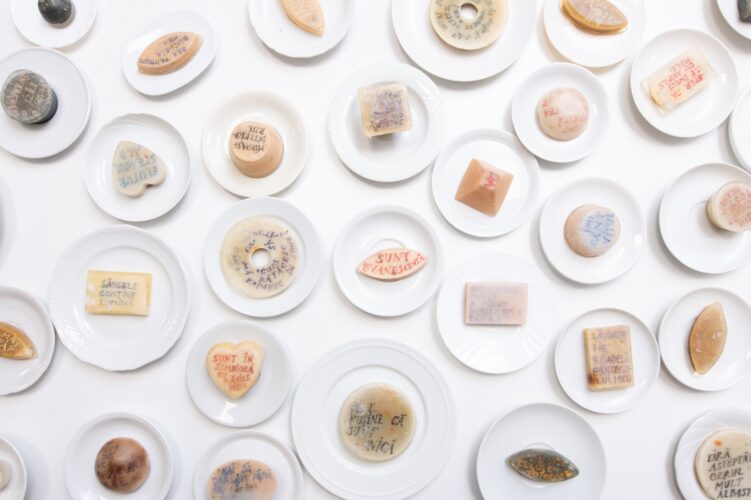
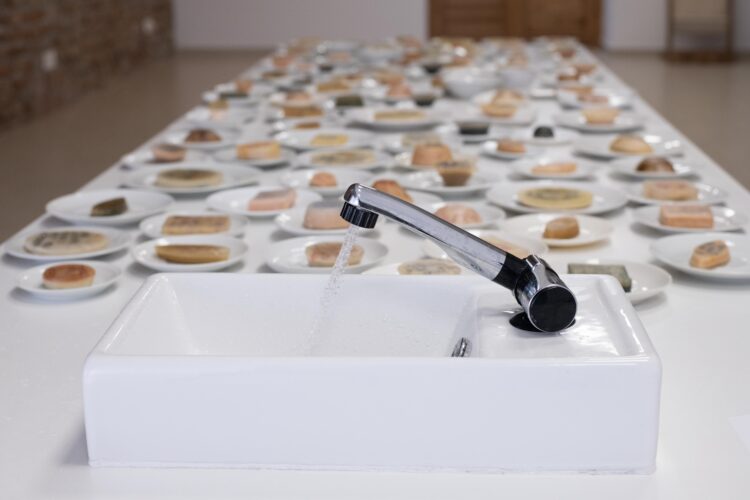
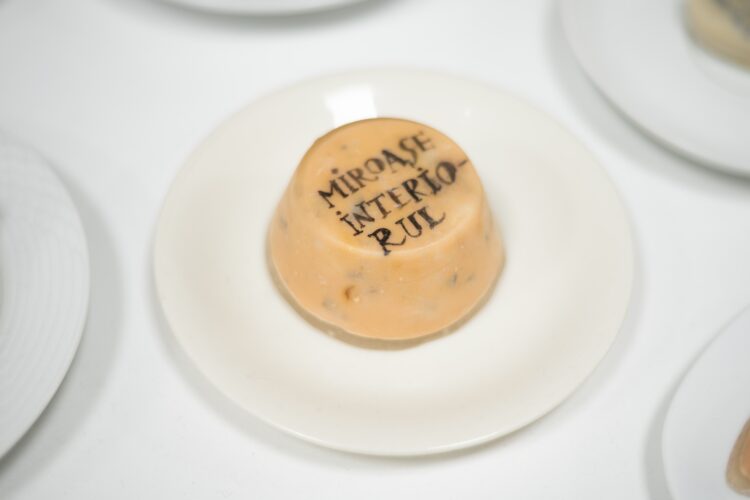
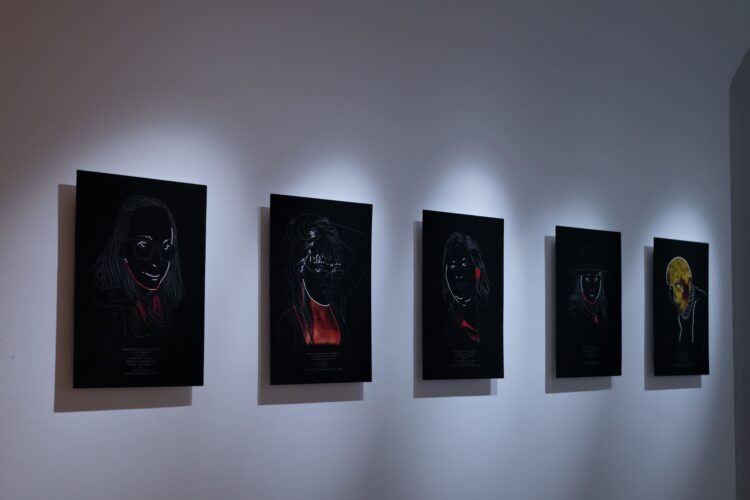
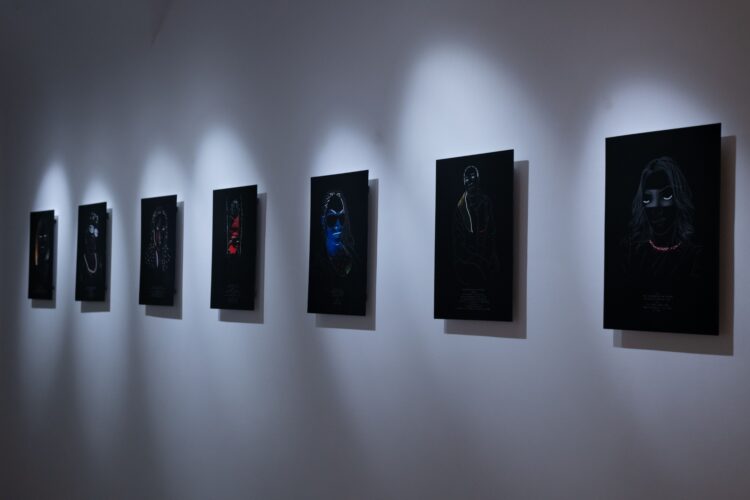
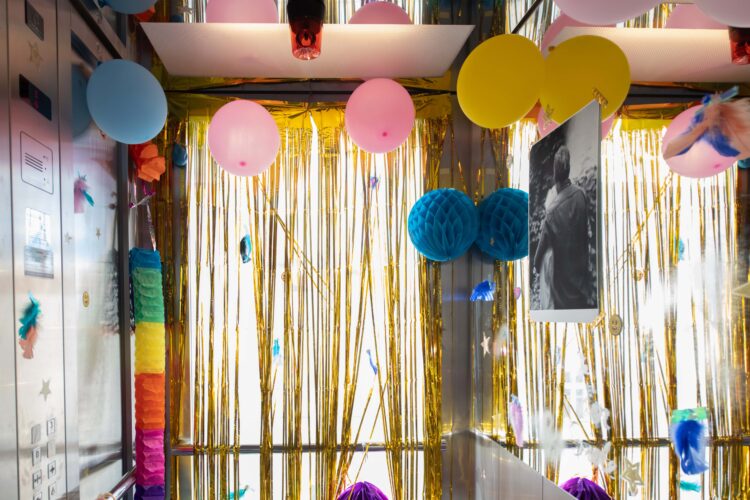
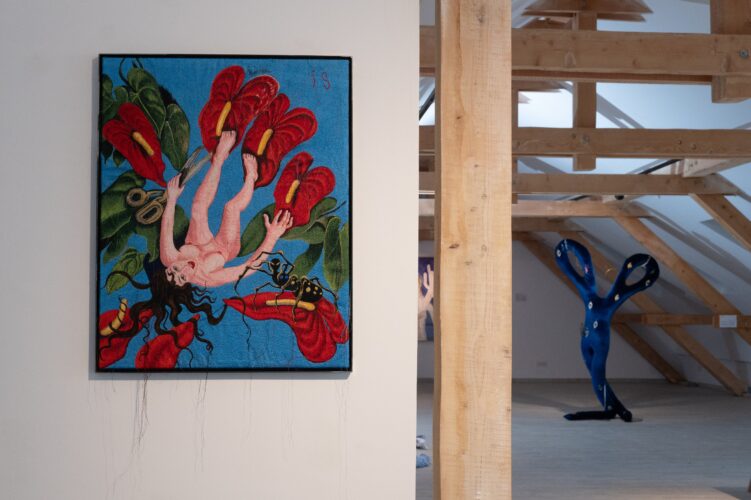
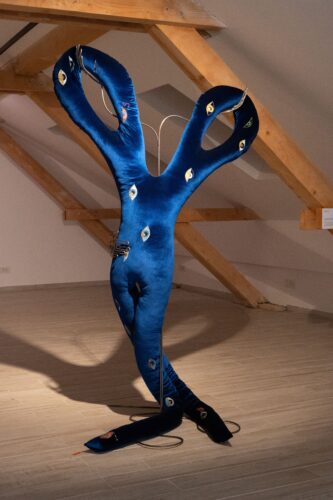
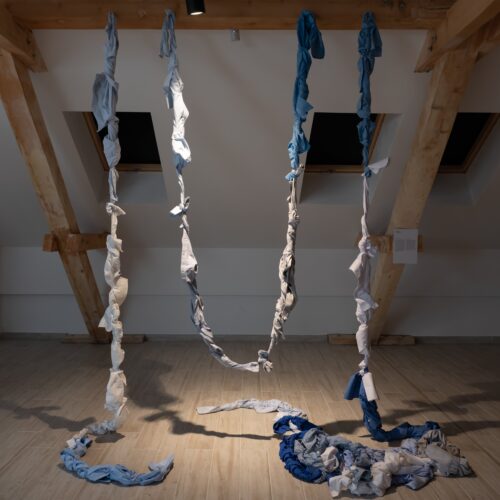
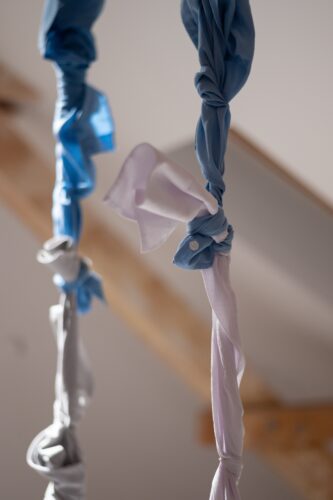
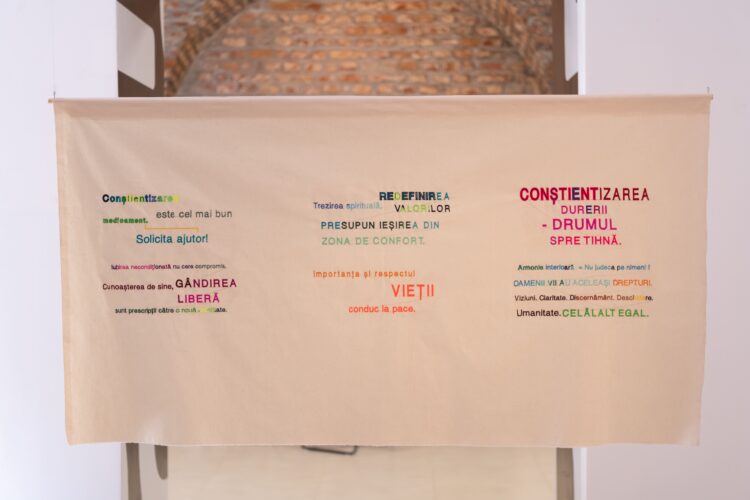
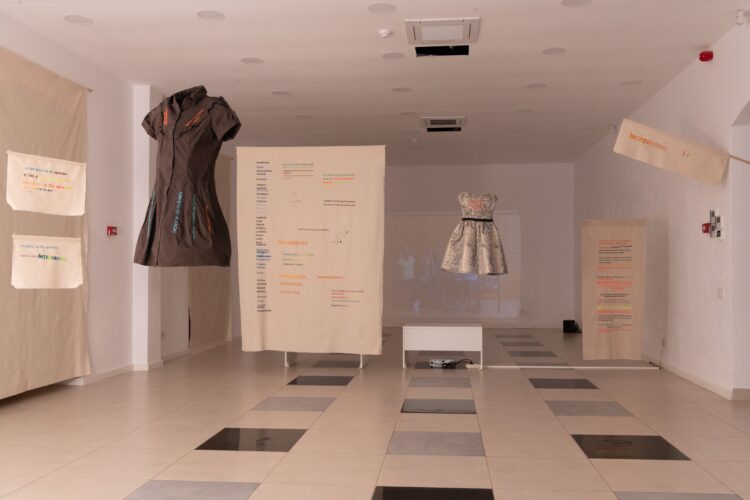
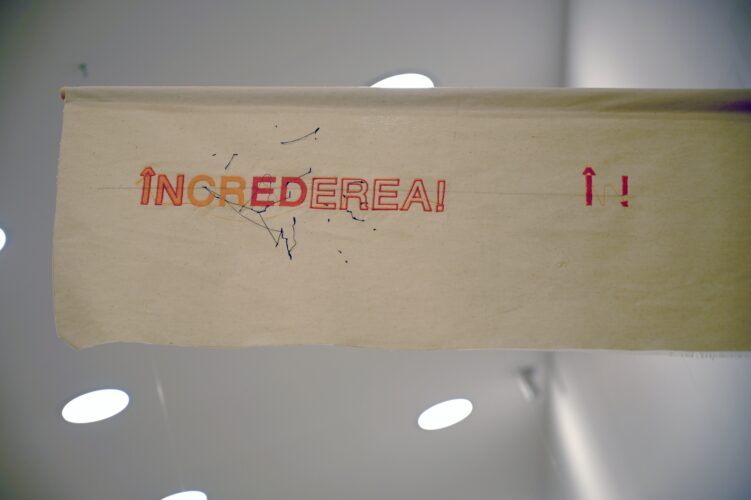
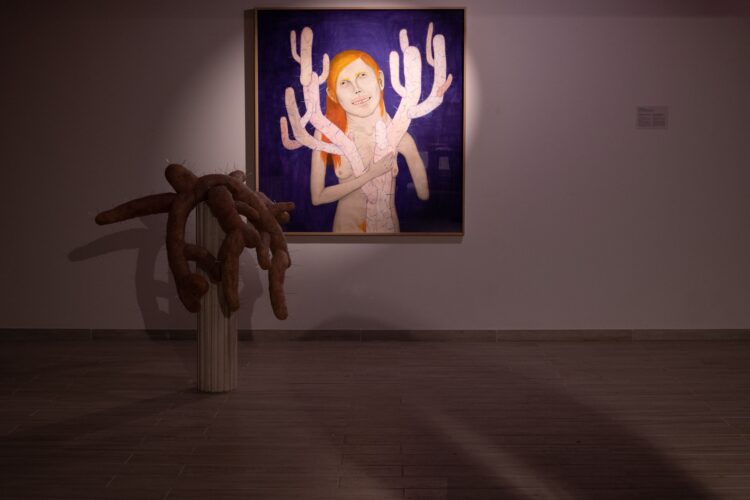
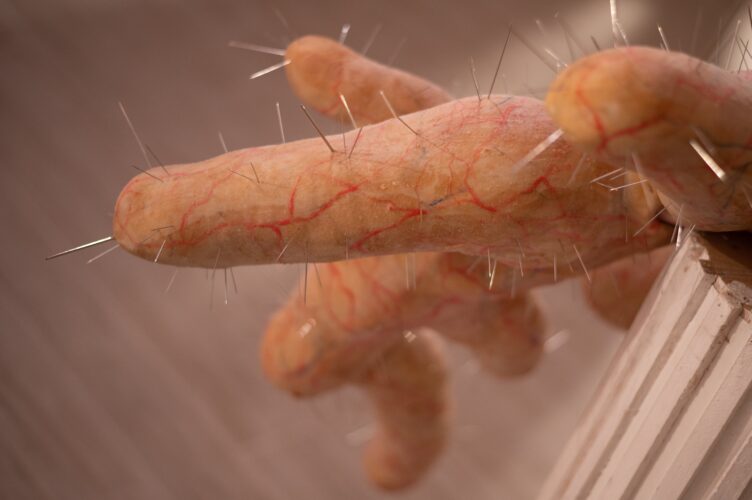
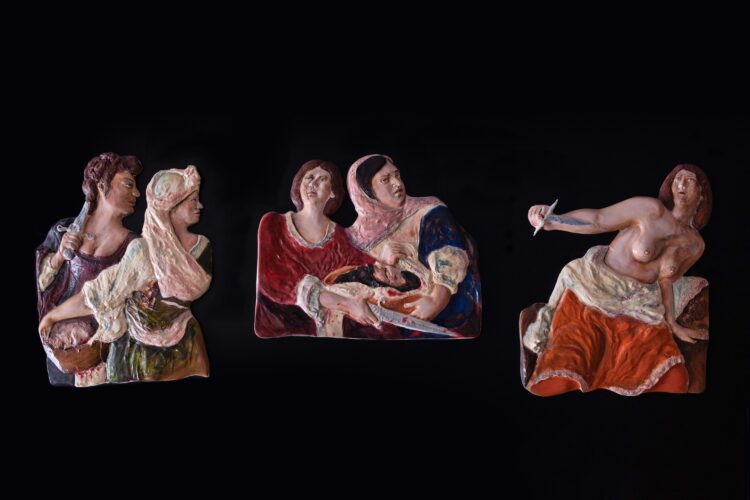
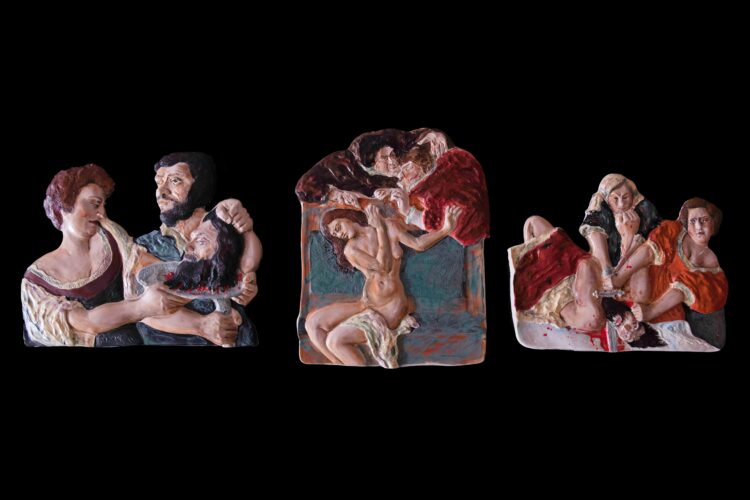
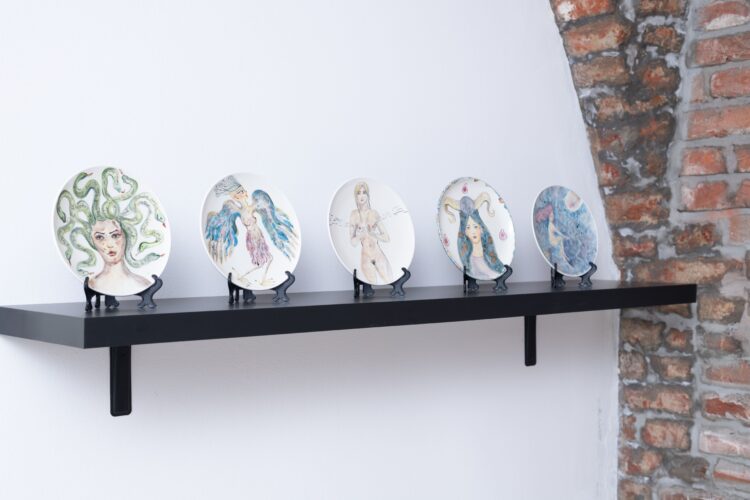
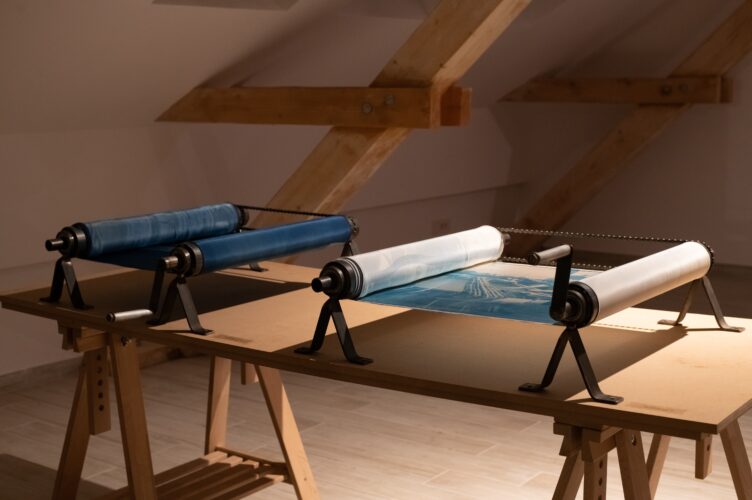
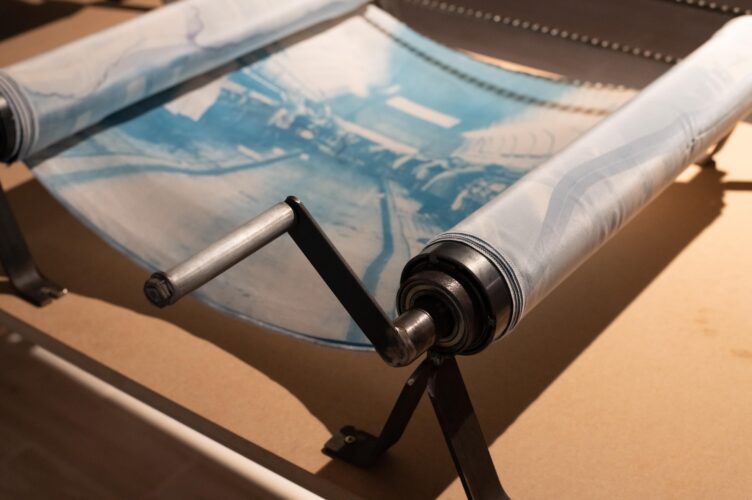
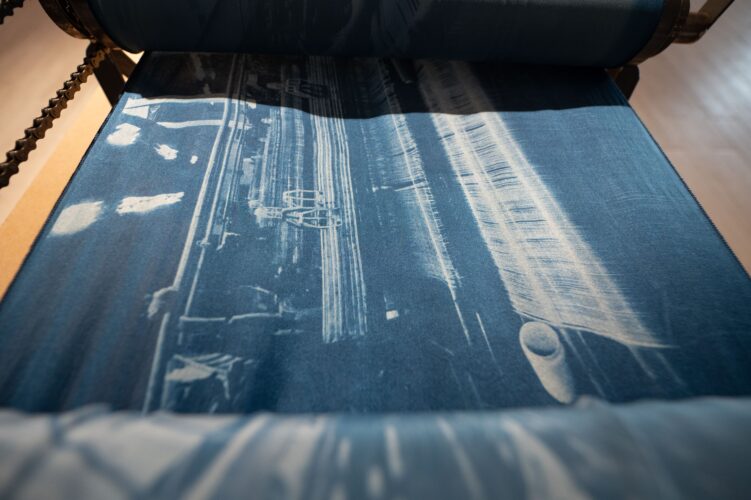
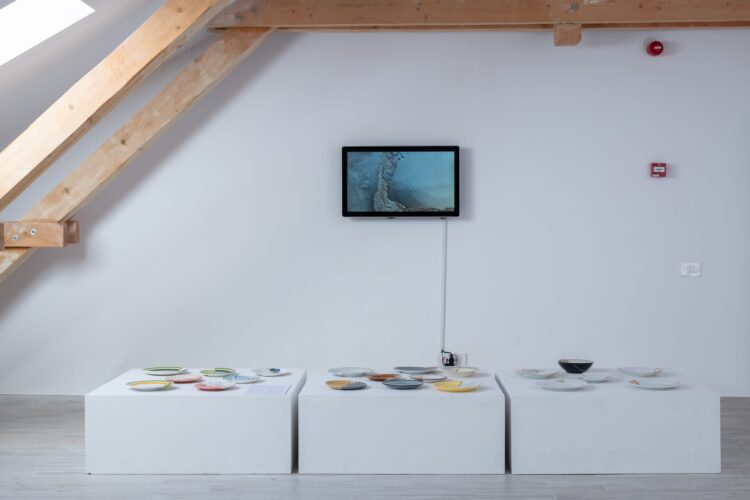
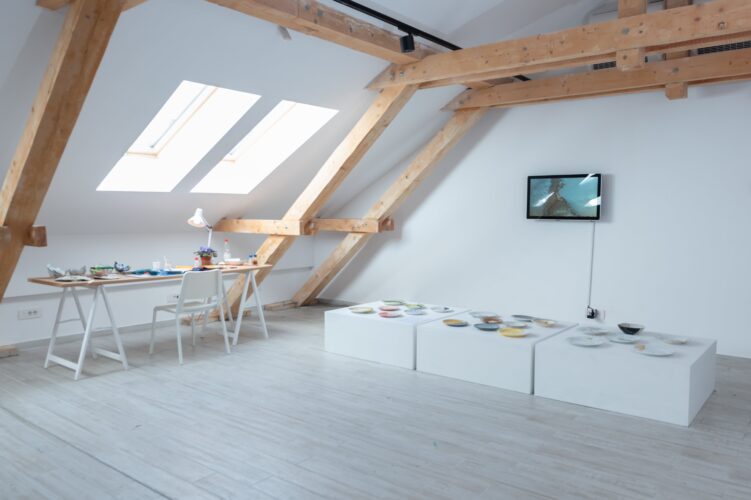
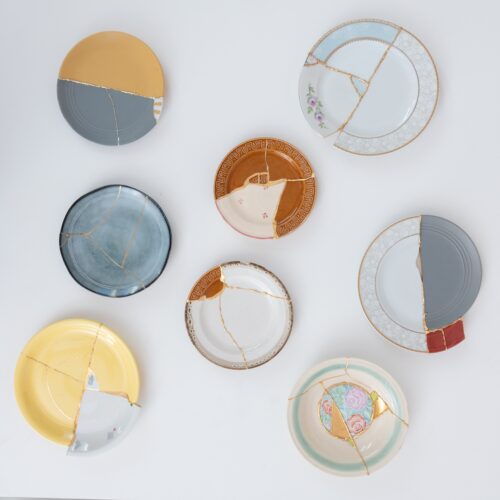
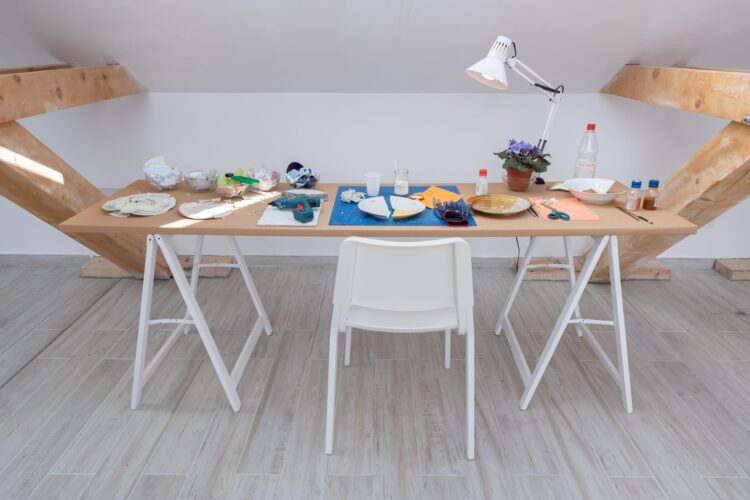
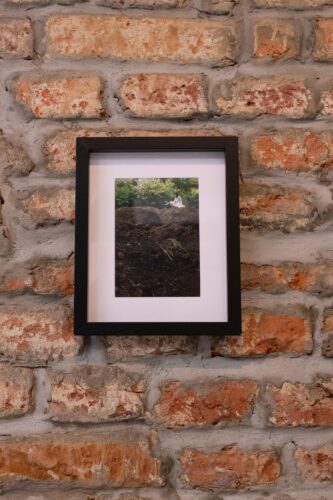
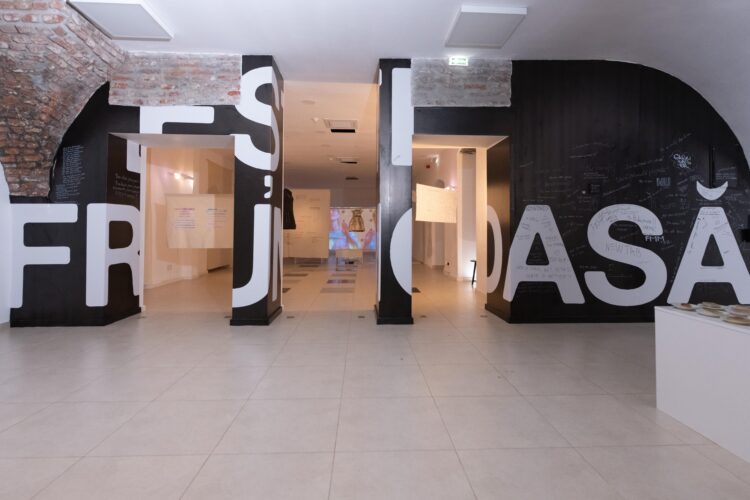
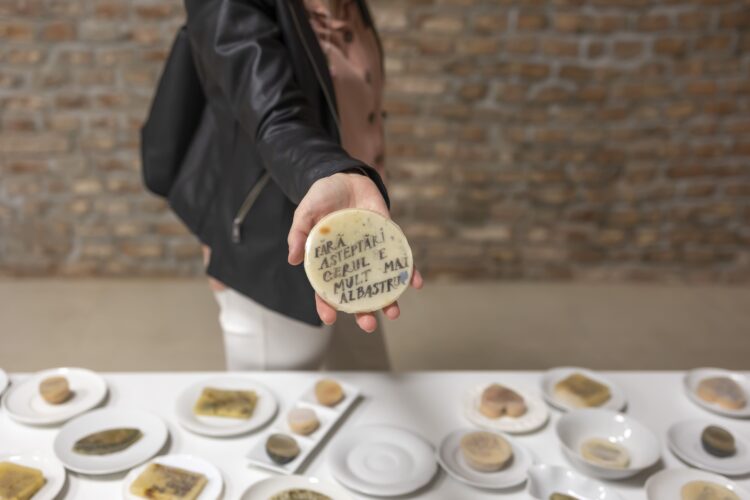
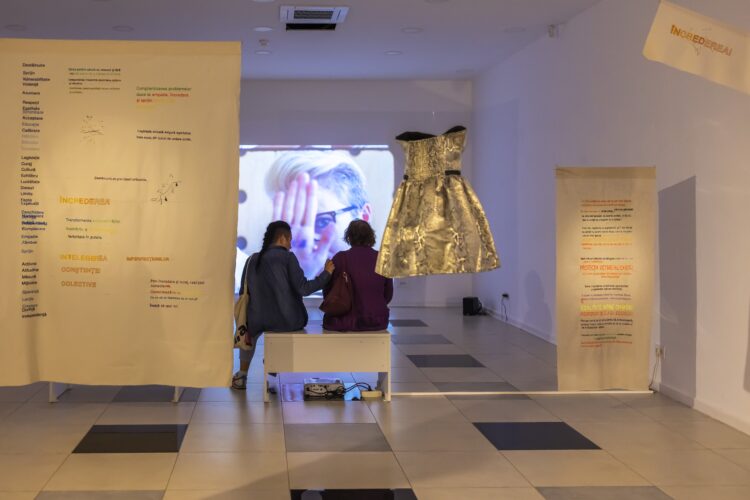
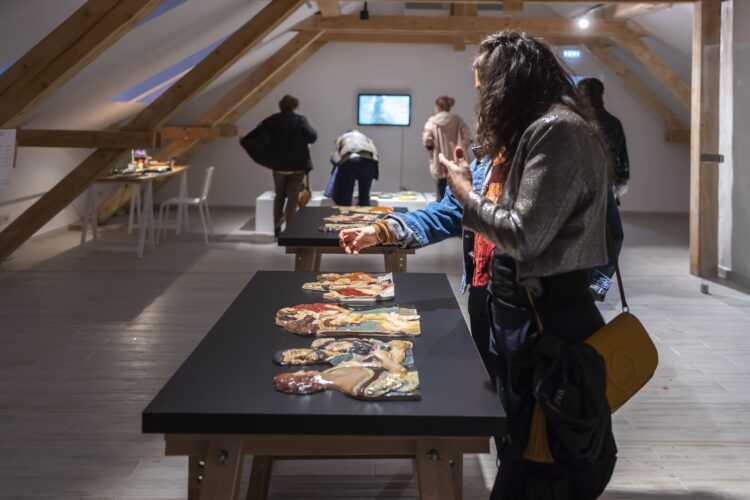
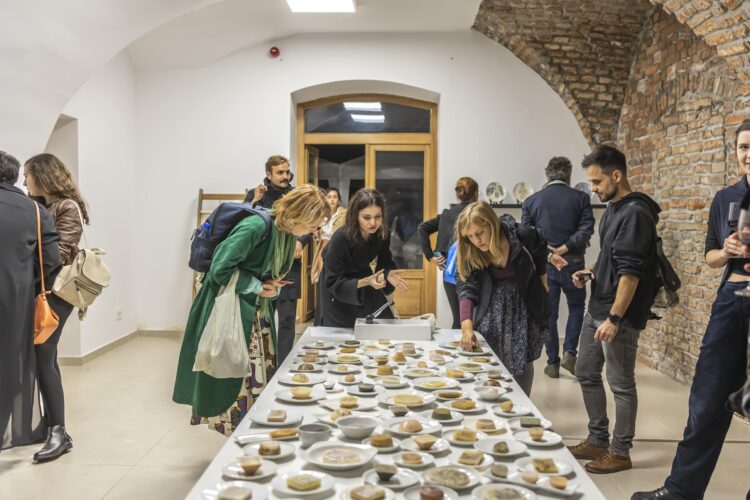
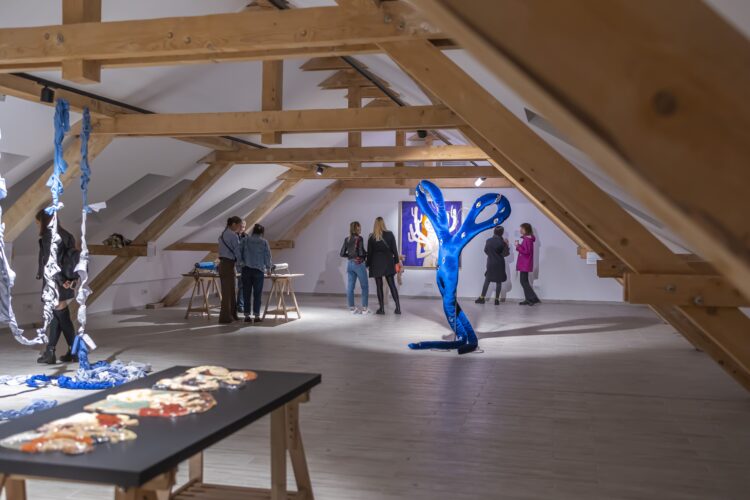

Comments are closed here.